No Module Named Yaml
Introduction:
Python is a versatile and widely used programming language that offers numerous libraries and modules to extend its functionality. One such useful module is YAML, which stands for “YAML Ain’t Markup Language.” YAML is a human-readable data serialization format, commonly used for configuration files, data interchange, and application data storage. However, encountering the “No module named yaml” error can be frustrating when you try to use YAML-related functionalities in your Python code. In this article, we will explore the causes behind this error and provide possible solutions to resolve it.
Causes of the “No module named yaml” Error:
1. Module Not Installed: The most common cause of the “No module named yaml” error is the absence of the PyYAML library in your Python environment. If you try to import the ‘yaml’ module without installing PyYAML, Python will not be able to find the required files and raise the error.
2. Incorrect PYTHONPATH Configuration: PYTHONPATH is an environment variable that tells Python where to look for modules and packages. If Python cannot find the PyYAML module, it could be due to an incorrect PYTHONPATH configuration or a missing entry for the PyYAML library.
3. Incompatible Python Version: The “No module named yaml” error can also occur if you are using an outdated Python version that does not support the PyYAML library. Ensure that you are using a Python version compatible with PyYAML.
4. YAML File Verification: Sometimes, the error may arise due to an issue with the YAML file itself. Syntax errors or missing key elements can prevent successful module importing. Verify the YAML file for any mistakes.
Possible Solutions for the “No module named yaml” Error:
1. Installing PyYAML Library: To resolve the “No module named yaml” error, you need to install the PyYAML library. You can use pip, Python’s package installer, to install this library by running the following command in your terminal or command prompt:
$ pip install pyyaml
2. Adding the PyYAML Path to PYTHONPATH: If the PyYAML library is installed but Python still cannot find it, you can manually add the PyYAML path to the PYTHONPATH environment variable. This can be done by adding the following line to your script:
import sys
sys.path.append(‘/path/to/PyYAML’)
3. Using Virtual Environments: Virtual environments provide isolated Python environments, ensuring that the required libraries and modules are installed within the specific environment. By creating and activating a virtual environment, you can resolve conflicts and ensure the availability of the PyYAML module. Use tools like ‘virtualenv’ or ‘venv’ to create and activate virtual environments.
4. Checking for Python Version Incompatibility: Verify that you are using a Python version that is compatible with the PyYAML library. You can check the PyYAML documentation or release notes to find the compatible Python versions. Upgrade or downgrade your Python version accordingly to resolve the issue.
5. Verifying the YAML File: If you are still encountering the error, double-check the YAML file. Ensure that it is correctly formatted and does not contain any syntax errors or missing elements. Rectify any mistakes in the YAML file to enable successful importing of the yaml module.
6. Seeking Help from the Community and Online Resources: If none of the above solutions work, it can be helpful to seek assistance from the Python community. Online forums, developer communities, and websites like Stack Overflow can provide guidance and solutions to specific cases of the “No module named yaml” error.
FAQs:
Q1: I have installed the PyYAML library, but I still get the “No module named yaml” error. What could be the problem?
A1: Ensure that you have installed the PyYAML library correctly and check the Python environment you are using. If you are using virtual environments, make sure they are activated. Verify that your PYTHONPATH is correctly configured to include the PyYAML library’s path.
Q2: I am encountering a “TypeError: load() missing 1 required positional argument: ‘loader'” error message. How can I resolve it?
A2: This error appears when there is a mismatch in the usage of the load() function. Check the PyYAML documentation to ensure you are using the correct syntax. The load() function requires a loader argument. Make sure you pass an appropriate loader to the function call.
Q3: I am facing issues with other modules like “PIL module Python” or “Import cv2” could not be resolved. Are the solutions mentioned here applicable for those errors too?
A3: The solutions provided in this article specifically address the “No module named yaml” error. However, the general idea of installing the required library, verifying the PYTHONPATH, using virtual environments, and seeking community help can be applied to other module-related errors as well.
Q4: Can I install PyYAML on both Windows and Ubuntu?
A4: Yes, PyYAML can be installed on both Windows and Ubuntu systems. You can use pip to install PyYAML on both platforms. However, ensure that you have the necessary permissions and dependencies installed depending on your operating system.
Conclusion:
The “No module named yaml” error can be resolved by following the above solutions. By installing the PyYAML library, configuring PYTHONPATH correctly, using virtual environments, checking for Python version compatibility, verifying the YAML file, and seeking community help, you can overcome this error and successfully use YAML-related functionalities in your Python code. Always ensure that you understand the specific error message and read the documentation to find the appropriate solution for your situation.
🐍 Fix Modulenotfounderror (No Module Named Yaml) Python Import Error (If Installed / If Exists)
Keywords searched by users: no module named yaml Pip install yaml, Import yaml could not be resolved from source, Python YAML, typeerror: load() missing 1 required positional argument: ‘loader’, PIL module Python, Import cv2” could not be resolved, Install yaml Python Windows, Install yaml Ubuntu
Categories: Top 22 No Module Named Yaml
See more here: nhanvietluanvan.com
Pip Install Yaml
Introduction:
In the world of Python programming, managing dependencies and packages is of utmost importance. Among the many essential tools at a developer’s disposal, the ability to install packages with ease can greatly simplify the development process. One such package manager widely used in the Python community is Pip.
In this article, we will delve into the details of the “Pip Install YAML” command. We will cover its purpose, installation procedure, and explore various functionalities and use cases. Additionally, a FAQs section will address common queries and concerns regarding YAML and its usage with Pip.
Understanding YAML:
YAML, short for “YAML Ain’t Markup Language,” is a human-readable data serialization format. It is often used for configuration files and data interchanges between programming languages. The simplicity of its syntax, combined with its readability, makes YAML an excellent choice when working with structured data.
Introduction to Pip:
Pip is a package manager for Python, allowing developers to easily install and manage software packages written in the Python language. It simplifies the process of handling dependencies and version control, ensuring that the correct packages are installed to enable smooth execution of Python programs.
Installing Pip:
Before you can use Pip to install YAML or any other package, you need to ensure that Pip itself is installed. Most recent Python distributions come with Pip pre-installed. However, if you don’t have it, you can install it using one of the following methods:
1. PyPA recommended method:
“`
python -m ensurepip –upgrade
“`
2. Linux distributions:
“`
sudo apt-get install python3-pip
“`
3. macOS:
“`
brew install python3-pip
“`
4. Windows:
“`
python get-pip.py
“`
Note that the above commands assume a Python 3 installation. If you are using Python 2, the commands may vary slightly.
Installing YAML with Pip:
Once you have Pip installed, installing YAML is a straightforward process. Open a terminal or command prompt and run the following command:
“`
pip install pyyaml
“`
This command instructs Pip to download the YAML package from the Python Package Index (PyPI) and install it on your system. Pip handles all necessary dependencies and ensures a smooth installation process.
Using YAML with Pip:
After successfully installing YAML, you can begin using it in your Python projects. To make YAML functionality available in your scripts, include the following import statement at the beginning of your code:
“`python
import yaml
“`
With this import, you can now leverage YAML’s functionality, such as parsing YAML files, manipulating data, and serializing data structures to YAML format.
YAML and Configuration Files:
One of the most common uses of YAML is for configuration files. Rather than using complex and rigid markup languages, YAML provides a more intuitive and readable syntax. Python developers often prefer YAML for its simplicity and ease of use.
To make use of YAML for configuration files, create a YAML file (e.g., config.yaml) and define your configurations using the YAML syntax:
“`yaml
database:
host: localhost
port: 5432
username: myuser
password: mypassword
“`
To read this configuration file in your Python script, use the following code:
“`python
import yaml
with open(‘config.yaml’, ‘r’) as file:
config = yaml.load(file, Loader=yaml.FullLoader)
# Accessing the values
print(config[‘database’][‘host’])
print(config[‘database’][‘port’])
print(config[‘database’][‘username’])
print(config[‘database’][‘password’])
“`
FAQs:
Q1. What is the difference between YAML and JSON?
A1. Both YAML and JSON are data serialization formats. YAML is more readable and allows comments, while JSON is more suited for web-based data interchange and has stricter syntax rules.
Q2. Are there any security concerns when using YAML?
A2. YAML can be vulnerable to certain types of attacks, such as code injection, if malicious input is allowed. Ensure proper validation and sanitization of user input when using YAML.
Q3. Can I use YAML with languages other than Python?
A3. Yes, YAML is supported by multiple programming languages, including but not limited to Python, JavaScript, Ruby, and PHP.
Q4. Is it possible to customize YAML parsing and serialization behavior?
A4. Yes, the PyYAML library allows you to customize the behavior by defining your own YAML tags, constructors, and representers.
Q5. Are there any YAML editors or IDE plugins available?
A5. Yes, there are several editors and plugins available for various IDEs, such as Visual Studio Code, Sublime Text, and IntelliJ IDEA. These tools provide syntax highlighting, linting, and formatting support for YAML files.
Conclusion:
In this article, we explored the world of YAML and its seamless integration with Pip, the Python package manager. Understanding YAML’s purpose and syntax opens doors to powerful configuration file management and structured data interchange. By following the provided installation instructions and utilizing the PyYAML library, you can efficiently work with YAML in your Python projects.
Import Yaml Could Not Be Resolved From Source
YAML (YAML Ain’t Markup Language) is a human-readable data serialization format that has gained significant popularity among developers due to its simplicity and versatility. It serves as a common language for communication between programming languages and can be used for configuration files, data transfer between systems, and storing complex data structures. YAML’s ability to represent data hierarchically makes it an ideal choice for structured documents. However, developers often encounter a common error while trying to import YAML files – “Import YAML could not be resolved from source.” In this article, we will explore the causes behind this error and provide solutions to resolve it.
Import YAML could not be resolved from source: Understanding the error
When importing a YAML file, developers typically expect their code to read the file and process its contents. However, in some cases, the importing process fails, resulting in the “Import YAML could not be resolved from source” error. This error message indicates that the program could not locate the YAML file or failed to identify it as a valid source.
Causes of “Import YAML could not be resolved from source” error
Several factors can lead to this error. Let’s discuss some common ones:
1. Incorrect file path: It is crucial to provide the correct path to the YAML file. If the specified path is invalid, or the file is located in a different directory, the importing process will fail. Ensure that you have provided the correct path to the YAML file.
2. File permissions: If the YAML file’s permissions restrict access, it may prevent the program from reading its contents. Ensure that the file’s permissions allow reading by the program or the user executing the code.
3. Corrupted YAML file: If the YAML file is damaged or corrupted, the importing process may fail. Validate the file’s integrity by opening it in a YAML validator or text editor to ensure it adheres to the correct YAML syntax.
4. Incompatible libraries or dependencies: Occasionally, outdated or incompatible libraries or dependencies may cause the importing process to fail. Verify that you have the necessary libraries installed and updated to support YAML imports.
Solutions to resolve the “Import YAML could not be resolved from source” error
Addressing this error requires analyzing the potential causes and applying appropriate solutions. Here are some solutions to help developers resolve the “Import YAML could not be resolved from source” error:
1. Verify file path: Ensure that the file path you are providing to import the YAML file is accurate. Double-check the directory structure and the spelling of the path to avoid any typos or mistakes.
2. Check file permissions: Review the file’s permissions and ensure that the program or the user executing the code has read access to the YAML file. Modify the permissions if needed.
3. Validate YAML file: Open the YAML file using a YAML validator or a text editor capable of parsing YAML syntax. The validator will pinpoint any syntax errors or formatting issues that could cause importing problems. Correct any identified errors and try importing again.
4. Update libraries and dependencies: Outdated or incompatible libraries could also be a reason for importing failure. Update the YAML parsing libraries or dependencies to their latest versions, ensuring compatibility with the codebase.
Frequently Asked Questions (FAQs):
1. How do I import a YAML file in Python?
– To import a YAML file in Python, you can use libraries such as PyYAML or ruamel.yaml. These libraries provide functions to read and parse YAML files easily. Import the desired library, open the YAML file, and use the library’s functions to process the YAML file’s contents.
2. Can I import a YAML file in a web application?
– Yes, you can import a YAML file in a web application. However, it is essential to consider that the file’s location and accessibility may differ from local file imports. Ensure that the web server has the necessary permissions to access and read the YAML file.
3. How can I ensure the integrity of a YAML file?
– To ensure the integrity of a YAML file, open it in a YAML validator or a text editor capable of parsing YAML syntax. These tools will flag any syntax errors, including indentation, invalid characters, or missing delimiters. Correcting these errors will help prevent importing failures.
4. Why am I still getting the error after trying the suggested solutions?
– If you have tried the solutions mentioned above and are still encountering the error, there might be an underlying issue specific to your code or environment. Consider seeking help from developer communities, forums, or posting a specific question with relevant details for assistance.
In conclusion, the “Import YAML could not be resolved from source” error can be caused due to incorrect file paths, permissions, corrupted files, or outdated libraries. By following the solutions outlined above, developers can effectively address this error and import YAML files successfully. YAML’s simplicity and versatility make it a valuable tool for managing data, configuration files, and structured documents across various programming languages and environments.
Images related to the topic no module named yaml

Found 44 images related to no module named yaml theme




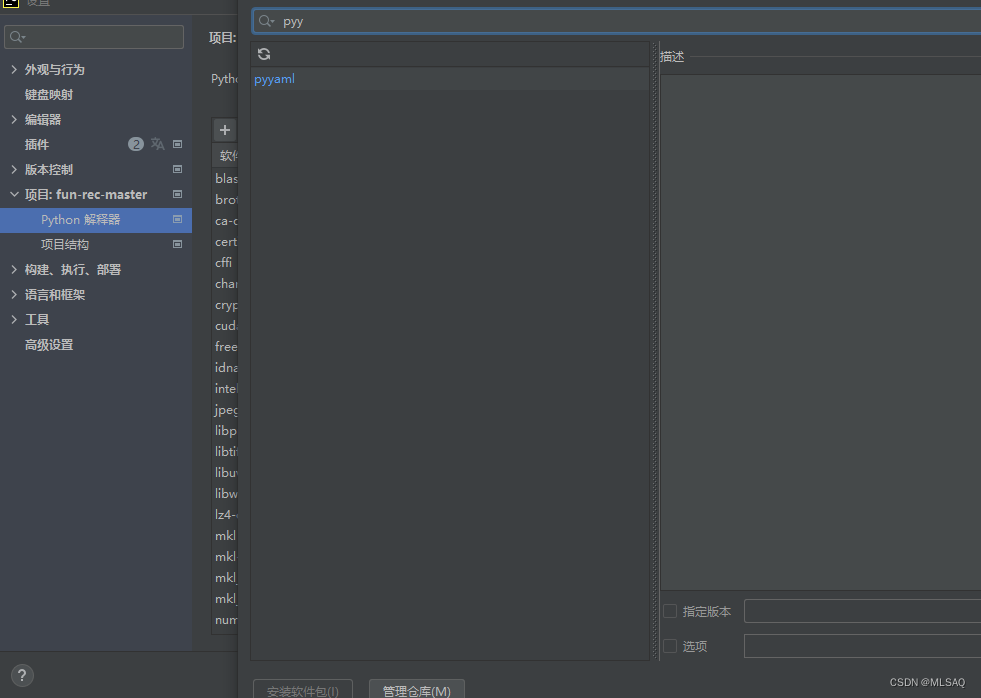

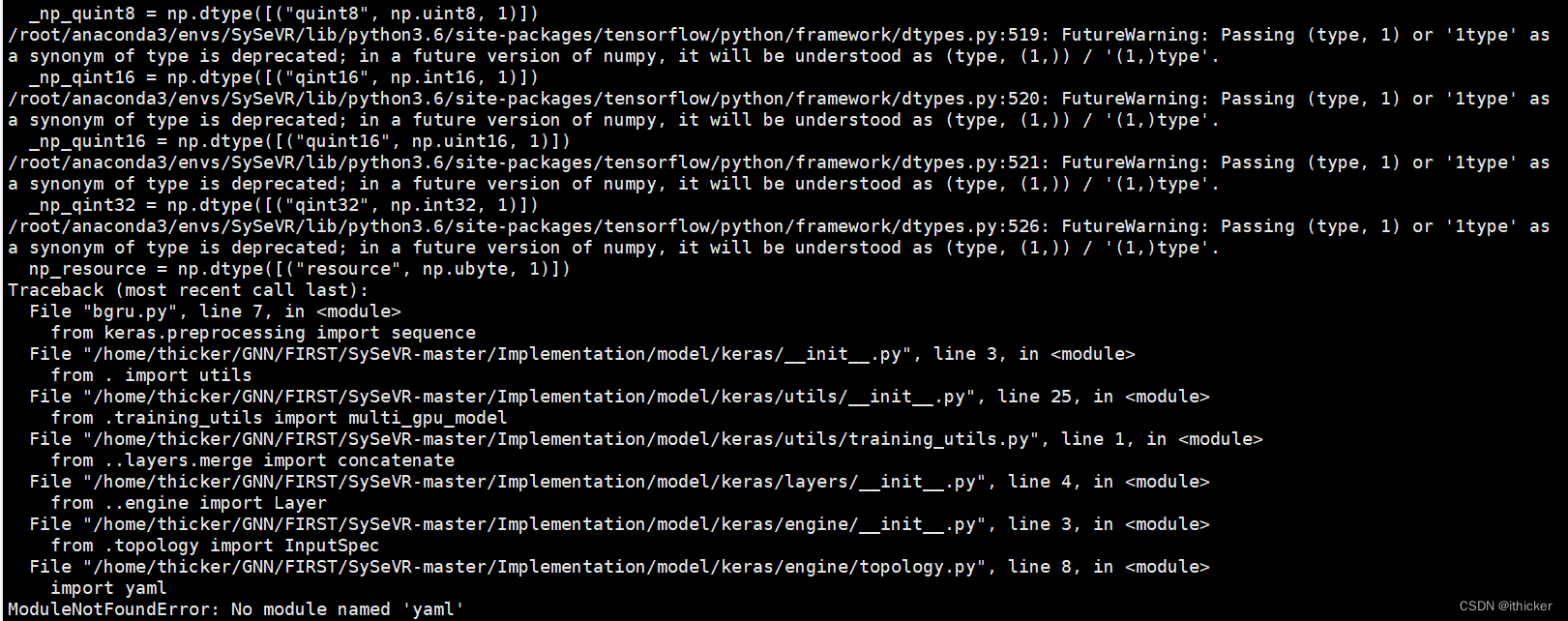
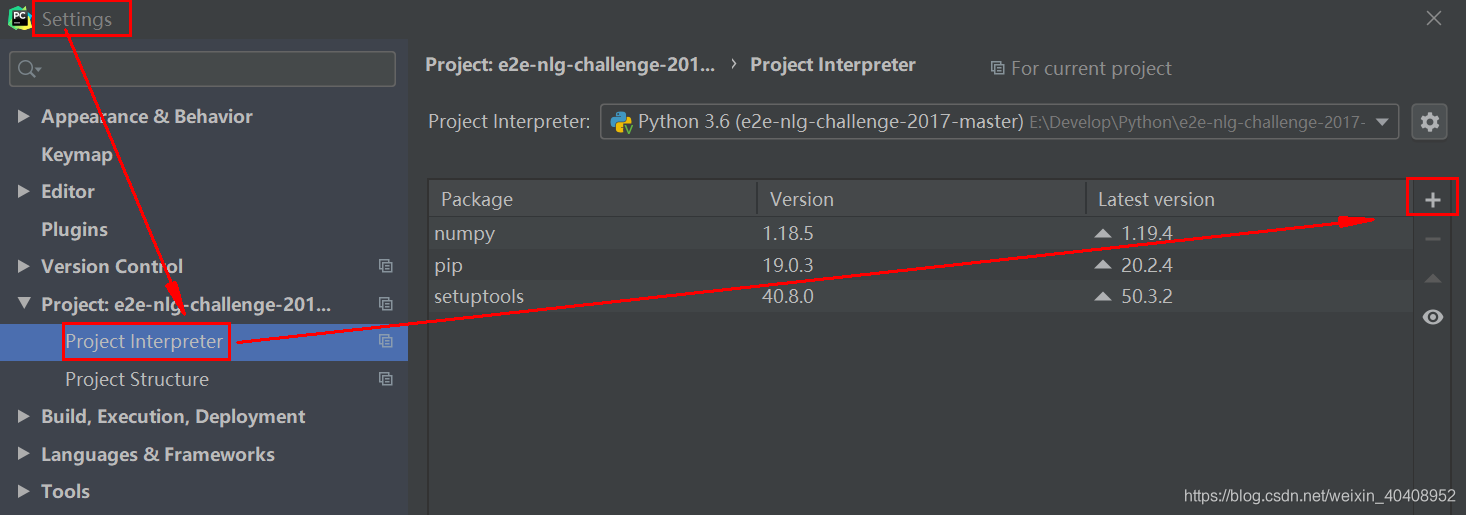



![Solved] Python No Module Named Error Solved] Python No Module Named Error](https://itsourcecode.com/wp-content/uploads/2023/02/Python-No-Module-Named-Error.png)
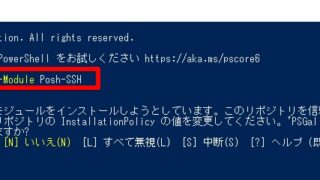









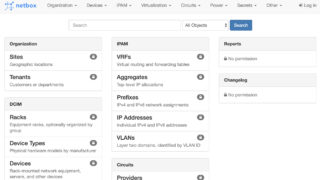




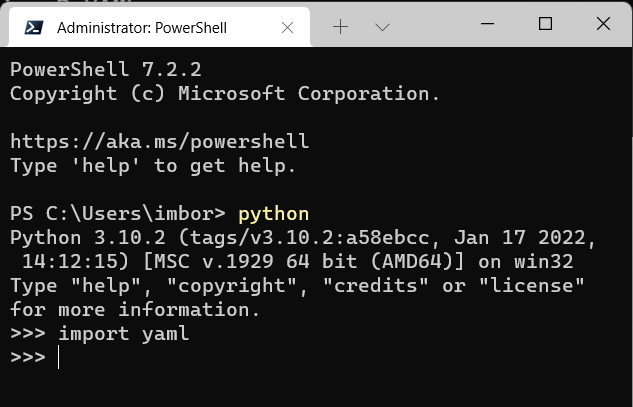


Article link: no module named yaml.
Learn more about the topic no module named yaml.
- ImportError: No module named ‘yaml’ – Stack Overflow
- ModuleNotFoundError: No module named ‘yaml’ in Python
- ModuleNotFoundError: No module named ‘yaml’ #291 – GitHub
- ModuleNotFoundError: No module named ‘yaml’ in Python
- How to fix ModuleNotFoundError: No module named ‘yaml’ in …
- How to solve ModuleNotFoundError: No module named ‘yaml’
- Modulenotfounderror: No module named ‘yaml’ ( Solved )
- Modulenotfounderror: no module named ‘yaml’: Quick Solution
- ImportError No module named ‘yaml’ in Python – Codeigo
See more: nhanvietluanvan.com/luat-hoc